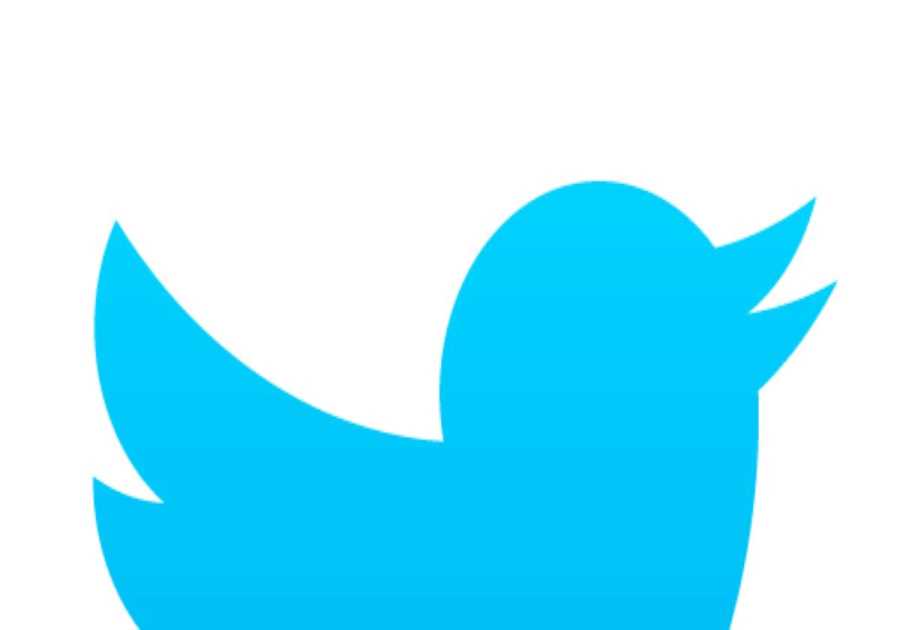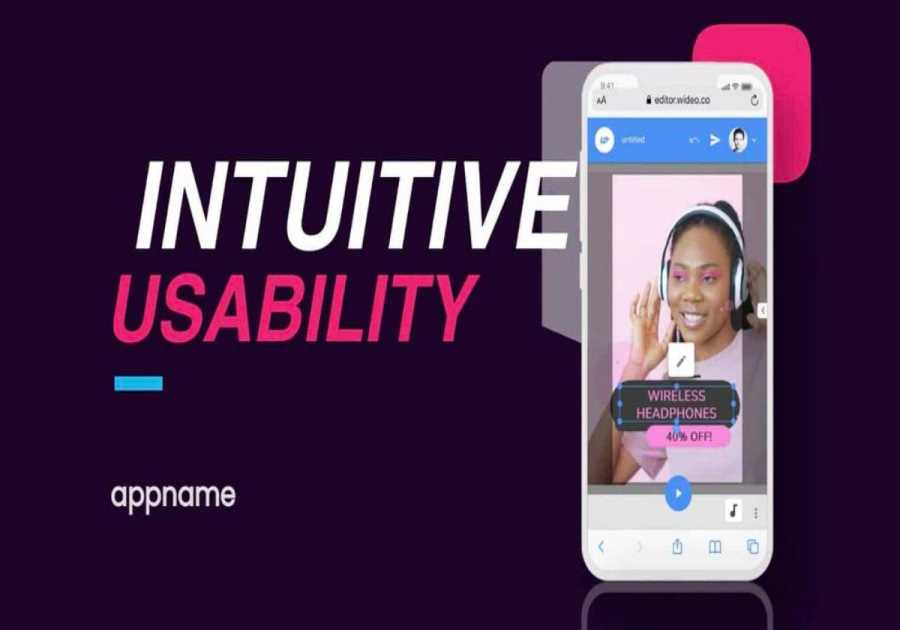
Full disclosure: this article is part of a sales funnel.
No, we’re not here to pitch you a product or dangle a limited-time offer in front of you. The truth is, we want you to read this guide, learn something helpful from it, explore some of our other resources, strengthen your relationship with us, see positive results within your own business… and keep coming back happy.
We aren’t alone in this endeavour, either. In fact, you’re likely engaged in a few different sales funnels right now (and “a few” is an understatement). That report you downloaded the other day? That’s part of a sales funnel. That free trial you signed up for? A classic sales funnel strategy. That website you visited after a quick Google Search? Yep, even that’s involved in a sales funnel. And that clearance sale that caught your eye at the mall? You guessed it – sales funnel, again.
And if you aren’t thinking about your own sales funnel right now – the journey your customers make from prospect to purchase – well, now’s the time to start doing so. Because whether you’ve created a strategy around that journey or are more of a “build it and they will come” approach, customers are on that path. And if you aren’t making it easy to arrive at the destination, you’re almost certainly missing out on opportunities.
We’re here to break down the sales funnel: from what it is and why you need to think about it, to how to build one and keep improving it.
From top to bottom: What is a sales funnel?
A sales funnel describes the entire sequence of steps people take as they discover your business, build a relationship with you and ultimately decide to become a customer by purchasing one of your products or services or enrolling in your course offers.
The shape of the funnel represents the number of people across each stage as people progress through:
- At the top of the sales funnel, you’ll find a diverse universe of people who might be interested in your courses or offerings. This includes your target market, people who might not necessarily be interested in what you have to offer, and everyone in between.
- In the middle of the funnel, that universe narrows to include leads who are more likely to enrol in your course and purchase your offerings. Those who aren’t interested have left the pool of individuals, and those who remain are actively considering you as one of many options to solve a problem they are currently facing.
- At the bottom of the funnel, the pool of individuals narrows down to leads who are interested, and even more to those who are ready – and willing – to buy from you right now. These are the prospects who are most likely to make a purchase… and who will be more costly if you lose them.
Like the namesake you might find in your kitchen cupboard, a sales funnel begins wide at the top and narrows at the bottom. This is because you likely have a much wider universe of prospects interested in what you have to offer compared to the number of people who will actually click that “purchase” button.
But unlike its namesake, the sales funnel is really more of a sieve. People “fall out” and exit at each stage, and that’s actually a good thing – after all, you don’t want to waste time and resources showing your offerings to prospects who aren’t interested in what you’re selling or who are simply not the right fit.
Still, your goal is ultimately to improve the experience of each customer as they enter the top of your funnel so that they’re more likely to make it all the way through to the bottom… again and again!
One size does not fit all
While sales funnels can be as simple as that three-stage top-to-bottom structure, they can also get more complicated.
If your sales journey has a lot of steps and you are asking leads to make a large financial commitment or if your product requires a lot of upfront education to demonstrate its value, you may need a sales funnel with more granularity than a standard top-middle-bottom approach.
You may want to create one overarching sales funnel that contains other mini-funnels within it if you have many products, services and courses to offer to new and returning customers.
Alongside the sales funnel, we also need to consider how the customer journey changes over time. The pre-digital path to purchase used to be much more linear, with companies “pushing” prospects through. Today, customers wind and weave across channels, with more alternatives available to them on the market, different sources of trust and truth, and higher expectations for personalization and service.
All this to say: don’t expect to get things right on the first go. A great sales funnel takes time to plan, build and implement, and even more time to tweak until it reaches its full potential.
The benefits of establishing your sales funnel
Are the time and effort needed to implement an effective sales funnel worth it? A resounding yes. We’ve seen it work with Thinkific customers like Eric Sui, CEO of Single Grain first-hand. He shares: “You’re going to have something that’s indestructible, that’s evergreen for the long term, and people are going to love you because you’re delivering value.”
Creating an effective sales funnel is a boon to both marketing and sales teams. Ultimately, the goal is to move more people from the top to the bottom, but let’s not forget the whole suite of benefits:
- Target your messages: Reach the right people, in the right way, at the right time with the right content. When you know who is on the purchasing path and where they are, you can tailor your messages and offers to them in ways that feel personal, rather than generic.
- Better use of resources: When you understand the customer journey, you can identify key moments of transitions where touchpoints with potential purchasers will have the greatest impact.
- Capture more opportunities: Identify opportunities and create touchpoints along the customer journey where you can upsell, downsell or cross-sell other courses or services you offer.
- Remove sales friction: Move customers through the sales cycle faster and easier by examining where they get stuck (and where they leave the process entirely) and taking steps to keep them moving through.
- Track and measure success: Mixing a little science into the art of sales, the sales funnel gives you the cold, hard, quantitative facts on whether your sales process is performing the way you’d like it to.
- Scale your sales process: A great sales funnel is easy to repeat and grows with your business, making the customer journey feel seamless no matter how many people are in the funnel at any given moment.
And the effort pays off. When you provide valuable content along every stage of the sales funnel, you win hearts and change minds – 87 percent of B2B buyers say it sways their buying decision, anyway. And when you nurture your leads, you nurture your deal size too – these customers tend to make 47 percent larger purchases.
Creating a Sales Funnel Strategy
What does it take to build your own sales funnel? It’s generally a good idea to work backward – starting with what you and your customers will get out of it. We’ll walk you through the basics and explain each stage a little deeper, step-by-step.
Step 1: Set your goal
Before you book a hotel, rent a car and make a restaurant reservation for your next trip, you need to know your destination. The same goes for your sales funnel. If you don’t know what you want to get out of it at the highest level, you’ll have a hard time figuring out what goes into it.
For example, you might want your sales funnel to help:
- Increase the total revenue your sales and marketing teams bring in
- Get more value out of individual leads
- Reduce the length of your sales cycle
- Spend money in smarter places throughout your funnel
- Keep happy customers returning for more
In addition, consider setting goals for individual stages of the funnel, too. Suppose you’re getting a lot of poor prospects through the top of the funnel. You might decide to make qualifying better leads a priority in the earliest stages. If you find a lot of people are dropping out of the sales process right before closing a sale, you might want to focus on better retention toward the bottom.
This goal (or goals!) you identify here will influence the amount of time, money and energy you put into each stage of the funnel. It’ll also dictate how you measure the success of your strategy and what kinds of improvements you make.
A quick note: the more precise you are when you set these goals, the better. A statement like “Increase revenue from inbound sales by 30 percent” will prove more useful than a nebulous objective like “increase revenue.”
Step 2: Understand your customers
Sales funnels are people-oriented, meaning you’ll need to figure out: who are the people you most want to sell to?
That means understanding who your perfect client is – your Ideal Client Profile (ICP). Your ICP is a persona you create that describes someone who is experiencing a problem your business or organization directly solves, who has an immediate need (and perhaps more needs in the future), and who has the motivation and resources to enrol in one of your courses.
When building your ICP, consider:
- Who are they? Dig into the demographics where you can.
- What are they doing? Look into their behaviors – where they hang out online and where they seek answers.
- Why do they care? Understand the problem they’re facing and what pain points come with it.
- How do you help? Identify opportunities where you and your business or organization can help solve specific problems.
Few leads will perfectly fit your Ideal Client Profile. So don’t forget about the people who are already buying from you. For that, consider a customer segmentation strategy that can help you make sense of the people who are already excited by your courses.
Understanding your ideas client’s problems, needs and behaviors at each stage of your sales funnel will help you make a bigger impact on prospects who are likely to convert (and waste less time on those who won’t).
Step 3: Map your sales funnel stages
No two businesses are exactly alike – so it should come as no surprise that no two sales funnels look the same, either.
Generally speaking, your sales funnel stages should align closely with the behaviors and needs of customers as they move through their journey. That’s why models like AIDA – or Awareness, Interest, Desire and Action – are favorites for sales and marketing teams.
But ultimately, the model you choose should reflect the business you run, the product or service you offer, and the people you serve.
AIDA: The time-tested sales funnel
A classic promotional model first proposed in the early 1900s, AIDA is still alive and well, loved for its simplicity and focus on the customer journey. For this reason, it’s a great starting point for businesses that are taking their first steps into creating a sales funnel.
Here’s how it breaks down:
- Awareness
Prospective customers first hear about your business, your product or your service. Until now, they didn’t know you exist, but now you’ve caught their attention.
At this stage, prospects aren’t necessarily ready to buy (though some may be, if the conditions are just right). They might not even be interested in what you have to offer at the moment. But the important thing is: you’re on their mind. And when that problem pops up or a need arises, your business or organization will already be a familiar name.
Paid advertisements are one major way to reach prospects at this stage, but organic content marketing – helpful information on your blog, social media posts and more – is key to success early on, too. A mention from an influencer or expert in your space can help spread the word. For those who already know they have a problem to solve, SEO can play a big role here, too. The more targeted you get, the higher quality prospects you invite into your funnel. - Interest
Prospects want to know more about you. Chances are, by now they have a specific problem to solve, and they’re getting to know their options.
Prospects are doing their research, getting to know more about what you – and your competitors – have to offer. They’re not looking for a product pitch, but rather a helping hand to inform them about their options and guide them toward the best decision. This is also a great opportunity for you to learn more about them in return.
The right content at the right time can make all the difference. Your blog is key in establishing your expertise and trustworthiness, as are lead magnets like guides, ebooks and reports that require an email address to access. Once you have those email addresses, you can launch targeted email campaigns to keep them interested throughout the research process. SEO plays a huge role as well, so make sure your website ranks high for the terms people are likely searching for. - Desire
Your prospect has narrowed their options down to two or three – and they feel good about adding you to that shortlist.
Prospects know by now that you can solve their problem and that you are a good fit for their needs. But if you’re going to win them over, you need to get specific about how you come out ahead of your competitors.
Ask yourself: What benefits can you offer that no one else can? What do you do better than anyone else?
Seal the deal with social proof – testimonials and case studies can help potential customers see exactly how you’ve helped people like them in the past. The details matter here, too. Specifics around pricing options, package deals and features can sway opinions in your favor – and even help you level up customers to a higher tier or premium offer.
- Action
Your prospect is making their final decision to become a customer – or to walk away (at least, for now).
For those who purchase your products or services and choose to enrol in your courses, make the process as easy as possible. Reinforce their decision with communications that make them feel welcome and drive home the benefits of becoming a student!
Let them know about your premium service if you have one, or other courses your business or organization offers if they like their experience with you.
For those who decline, all is not lost! Keep in touch because you never know what their experience with a competitor might be like – they may come back to you in a week, a month or a year to try you out if they aren’t satisfied or if a new need arises that you’re uniquely positioned to fit.Modern AIDA add-ons
While AIDA is good as a generic sales funnel model, it isn’t perfect. After all, it was posited in a pre-digital time, when customer journeys were much more linear and predictable.Today, however, customers have more power. They don’t want you to push products on them – they want to pull information as they need it. They can do more research on their own – a quick Google search can return millions of results in a matter of milliseconds. Self-service is now preferred by many prospects – in the B2B world, the average buyer consumes 13 pieces of content before making a decision.
As customer behavior changes, so too do sales funnel models. That’s why you’ll see steps like this added to the process:
- Evaluation: Prospects typically spend more time researching their options, and more time deliberating with friends, family and colleagues. They’re on social media, browsing reviews and asking for recommendations. This is a fantastic opportunity to nurture prospects who already know about you, offer limited-time promotions to help them move to a decision phase, or even enter into their awareness set if they haven’t heard of you before.
- Engagement: The average sales lead requires between six to eight touchpoints before they make a move. Nurturing them with targeted (or even personalized) communications and offers throughout the decision process can elevate your company above the rest by showing that you’re on the other end, paying attention to them. Participating in spaces where customers spend time online – think forums or social media groups – shows you’re willing to help, too.
- Retention: Customers require attention after purchase, too. After all, if they’re happy with your course, they may decide to enroll in another one – or upgrade to your top-tier service. And if they’re really happy, they may even bring more customers with them through word of mouth. Regular emails, participation in communities, customer feedback and continuing education can make the difference between a customer who comes back and one who says goodbye.
Step 4: Define your metrics
You can’t manage (or improve, for that matter) what you don’t measure. That’s why metrics make the list of vital steps in creating your sales funnel.
Each interaction with your company – from ad click to buy button – tells a powerful story about your customers and how they’re interacting with you. And quantifying that journey helps you figure out the places where your funnel is performing well, where it needs a little boost and whether you’re on track to hit your overall goals (remember Step 1?).
Let’s talk about some of the most important metrics, from top to bottom of your funnel… and beyond:
Top-of-funnel metrics
- Entry sources: The routes through which people enter your sales funnel. This includes click-throughs on social media ads, organic search results, shared blog articles and even cold calls or emails. Pay attention to the sources that attract your very best customers in particular. Expanding on those efforts may yield even greater results!
- Lead acquisition cost: The amount of money you spend on marketing and promoting your business to gain a single lead. This will give you an idea of how much money you’re spending in the earliest stages of your customer journey – and give you a number to measure against as you hone in on the most effective methods.
Middle-of-funnel metrics
- Engagement rates: The way people engage with your business or organization. The more interested a prospect is in you and your courses, the more you can expect them to consume your content, interact with your social channels and reach out with questions. There are a lot of indicators for engagement, including (but hardly limited to):
- Advertising click-through rates
- Website and landing page visits
- Pageviews for specific pieces of content
- Email open and click-through rates
- Social media interactions
- Call-to-action clicks
Bottom-of-funnel metrics
- Conversion or close rates: The number of prospects at the top of the funnel who eventually make a purchase. You can track mini-moments of conversion along the way as well, such as email signups and resource downloads.
- Customer acquisition cost: How much money you spend on a single customer before they make a purchase. Similar to your lead acquisition cost, knowing this metric will help you make better decisions about the resources you allocate to different marketing and sales efforts.
Post-sale metrics
- Customer lifetime value: The total value of a customer over the lifetime of their relationship with you. This is a calculation that considers both the worth of a customer as they purchase from you, their value as they advocate and promote you, and the cost of acquiring and serving them.
- Retention rate: The number of customers who continue to buy from you after their first purchase, over a period of time. It’s often less costly for a business to retain customers who keep buying than it is to acquire new ones.
- Customer churn: The percentage of customers who leave over a given time period. This metric can help you identify common areas where people lose interest or encounter issues after their initial purchase – useful knowledge if you want to provide support and keep them around for longer.
Whole funnel metrics
- Exits: Places where people drop out of the sales funnel. Exits are inevitable – after all, not everyone is a perfect fit for your product. But there may be some leaks you can fix to prevent good leads from leaking out.
- Lead volume: The number of people in each stage of your funnel at a given time. This metric will help you understand your overall deal flow along with changes in the number of leads as you tweak your strategy.
- Time in stage: The length of time a prospect or lead takes to move from one stage in your sales funnel to another. This is a valuable insight when it comes to knowing when people feel ready to convert – a boon when you’re timing your communications. Knowing this also gives you a good idea of your whole sales cycle.
- Revenue growth: The change in revenue your sales and marketing efforts generate over time. If revenue is a driving goal of your sales funnel strategy, tracking this metric is a must-do.
Step 5: Identify gaps in your sales funnel
A sales funnel isn’t a one-and-done exercise. To get the most from it, you’ll need to give your funnel a periodic health check for gaps – places where it just isn’t performing the way you’d like. Once you know where those gaps are, you can address them.
These health checks are especially important when your sales funnel strategy is new. But when you continue to test solutions and recheck your progress, you should see improvements as you hone the process.
Your sales funnel health exam may include a check for common red flags like:
- Slow movement or bottlenecks: Are people getting stuck at certain points? Do they take a really, really long time to move from one sales funnel stage to another? Once you know where the roadblocks are, you can take steps to remove them.
- Sales funnel leaks: It’s going to happen – if leaks didn’t occur, we’d call it a sales cylinder, not a funnel! But if you find a lot of people exiting your funnel in the same places, it’s worth investigating what’s turning them away.
- Low lead volume: To get 100 sales, you might need 500 engaged leads, 5,000 interested leads and 10,000 prospects (of course, we’re making these numbers up, but you get the idea). If you’re short in the sales funnel stages above, you’ll be short below, too.
- Low lead quality: Pay attention when poorly qualified leads – people who aren’t likely to convert – move into the later stages of your sales funnel. Leads at the bottom tend to be more costly than those at the top, and if they never pay off, it’s a waste of resources.
- Underperforming content: If no one clicks on your blog article or opens your email, does it really exist? Okay, it’s not a tree falling in a forest, but the point is: if people don’t with your content, that content needs to be re-evaluated and improved or removed.
- Frequently asked questions: If lots of potential customers ask you the same questions at the same time, that’s a good indication that you’re missing an important piece of content somewhere. Use this knowledge as an opportunity to strengthen the content you provide.
Step 6: Optimize and manage your sales funnel
Once you’ve analyzed your metrics and identified your gaps, it’s time to adjust your funnel – and polish it until it shines!
At a high level, optimization and management mean doing more of what works and less of what doesn’t. They’re also about prioritizing your time and resources in the places that make the most impact and on the people who are most likely to convert.
There are two main ways to determine what to optimize and how to do it effectively.
Survey your customers
Ask people at each stage of the funnel about their experience. A simple survey is enough to yield helpful results, especially for those who don’t have a strong relationship with you yet. Existing and past customers may be willing (and even happy) to give you 10 to 15 minutes of their time to answer more specific questions.
- Target prospects:
- What problems are they currently experiencing with your course topic or area of expertise?
- Where do they start their search?
- What solutions immediately come to mind?
- Engaged leads:
- What kind of solution are they looking for?
- Where do they put their trust?
- What priorities are most important when making a decision?
- Existing or past customers:
- What convinced them to purchase from you?
- What content was most helpful in making their decision?
- What kept them coming back – or caused them to leave?
Put your sales funnel to the test
Think of optimization as an experiment. You make a hypothesis about a change that might boost your sales funnel’s performance, test it out and track the results against your existing metrics.
The way you optimize your funnel will depend on the stages you choose and the content you offer, but here are some ideas you can start with.
At the top:
- Run multiple ads targeting different audiences. Test different messages, colors, fonts, images and calls-to-action to see what resonates best with your target market.
- Test different approaches to content, from the videos on your YouTube channel to your blog to your podcast. See what gets shared organically on social media, what catches peoples’ attention and what people are most likely to interact with.
In the middle:
- Try different lead magnets – valuable content offered free of charge in exchange for contact details. Does a free sample course lead to a higher volume of high-quality leads than a guide, webinar or newsletter?
- Hone your email campaign. Try different approaches to your messaging, frequency, subject lines, links to targeted content, calls-to-action and more. Track your open and click-through rates to see what performs best with your high-value customers-to-be.
- Perfect the landing pages you build in a similar way. Test different headlines, messages and calls to action. Even small differences in fonts and colors can make a big impact.
At the bottom:
- Even the offer you make – whether it’s a limited-time discount or a bundle deal – can sway people in different ways. See what resonates most… and what nets you the most revenue.
Sales funnels in action
Let’s walk through an example of a sales funnel specifically built for an online course:
- Publish free content that solves a problem your target audience has. This might be a video, a podcast episode or a blog – something that lands you on their radar, piques their interest and gets them engaged.
- Build an email list with a content upgrade. Suss out the casual readers from those who are more likely to enroll by offering a higher tier of content (think ebooks, checklists, guides or even a free course). Ask for an email address in return.
- Welcome new subscribers with an email. Thank them for joining and direct them to their free resource from the step above. Using an autoresponder system makes this easy and fast.
- Create a follow-up email series. Build interest and anticipation by highlighting the content and benefits of your product, service or course. Include a clear call-to-action in each, and end the series with a bang – an offer they can’t refuse.
- Follow up with the non-buyers. In sales, “no” doesn’t mean “never” – it may simply be “not right now.” If someone showed interest and intent but didn’t enroll, ask them why… and keep checking in on them in the future.
Learn more: Create a sales funnel for your online course
SaaS sales funnels
If you’re a software-as-a-service business, your sales funnel might look a little different. For one, you might place more emphasis on establishing trust, nurturing a long-term relationship and building customer retention than a business that relies on one-time purchases.
The low-risk try-before-you-buy approach is popular for building that kind of relationship. You’ll see this across streaming services like Apple TV’s seven-day free trial, Amazon Prime offering a one-week trial at a heavily discounted price or Disney+ partnering with telecom carriers to provide a free year of streaming. Once customers experience the product for themselves, they can make a more informed decision on what they’ll gain when they sign up – and what they’ll miss out on if they don’t.
SaaS businesses essentially need to keep winning customers month by month, keeping them satisfied that they’re getting value throughout the lifetime of their relationship with you. After all, it’s roughly five times more costly to bring in new customers than it is to retain existing ones.
Look no further than Salesforce for a shining example of post-sale support through community engagement. Their Trailblazer community is built of Salesforce users who have stories to tell and skills to share with others who are just getting started. New users benefit from knowledge that gives them greater success as they get off the ground. Overall, they find a sense of belonging among others with similar interests, locations and roles.
Marketing sales funnels
A marketing sales funnel is another kind of conversion funnel that puts emphasis on the kinds of content and messaging people receive across your channels as they move through the journey from prospect to purchase. They typically align with your sales funnel with a particular focus on the kinds of marketing touchpoints, channels and messages people receive along the way.
Let’s put that into a little more context with a quick example:
- To garner awareness, your marketing efforts may be more focused on targeted ads, sharable videos, partnerships with influencers and a strong landing page as you cast a wide net.
- To stoke interest, you might focus on marketing that helps with research, like blog content, YouTube videos and social media mentions.
- To foster desire, your priority may be more in-depth content gated behind email signups feeding into a personalized email campaign that culminates in a last call for an irresistible offer.
- To invoke action, special offers, pricing information, customer reviews and case studies can help drive the deal home.
A journey through the marketing sales funnel may look something like this:
Social ad > Landing page > Email campaign > Purchase
or
Google search > Blog > Customer reviews > Purchase
Generally, at each stage of the marketing sales funnel, you’ll want to be able to answer the following about your prospects and leads:
- What do they think about my business or organization?
- Where can my business or organization meet them?
- How can my business or organization engage with them?
- What content do they want?
- How will I move them to the next stage?
Keep your sales funnel strong
We started this article with full transparency, and we’ll end that way too. Because implementing a sales funnel is a lot of upfront work – and it isn’t easy. You can expect to spend some resources on tactics that don’t quite fit with your business or resonate with your customers.
And it’s never really “done.” Revisiting your sales funnel regularly will help you keep up with new markets, fresh competition and changes in customer behavior and expectations. It’ll also help you make improvements to your courses as you understand more about your customers and the challenges you help them solve.
The magic happens after you’ve tested a few approaches and started to get things right. Once you have it up and going, with all your metrics in place, you walk away with an evergreen sales funnel set up to grow with your business and serve you over the long term.
Looking to boost revenue for your business with online course sales?
With Thinkific Plus, you can build, design, market, and host online courses that are easily accessible to your prospects, customers and business partners.
Thinkific Plus is a scalable platform that is simple to maintain, seamlessly integrates with your existing software, and is customizable for your brand needs. Schedule a call to try it for free.
Sales & Marketing,Articles,Grow Your Business,Thinkific Plus,online course creation,Sales,Content Marketing,Sales Funnel,Online Course Sales,Conversion Funnel,Conversion
--------------------------------------------
By: Daniela Ochoa
Title: Boosting your Business Revenue with Sales Funnels: A Complete Guide
Sourced From: www.thinkific.com/blog/sales-funnels/
Published Date: 07/16/22
.
Did you miss our previous article...
https://bestbusinessblogs.com/content-marketing/how-long-should-a-social-media-video-be-tips-for-every-network






